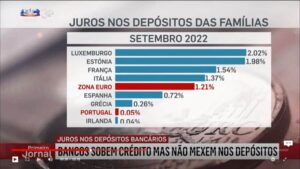Beaten by the Aussie
GBP: Threat of no-deal Brexit recedes
The UK economic evidence belied the pound’s strong performance. GfK’s consumer confidence measure fell three points in August to -14. Nationwide’s house price index was flat for the month and 0.6% higher on the year. The British Retail Consortium’s measure of retail sales “flatlined in August with the 12-month average dropping to a new low of just 0.4%”. The big misses were the purchasing managers’ indices. Manufacturing touched a seven-year low at 47.4, with business confidence at a series-record low. Construction was down by a quarter of a point at 45.0, with orders falling at the fastest pace for over ten years. Services was positive at 50.6 but only just so.
Sterling nevertheless had a good week, thanks to the passage through parliament of a bill to prevent Britain leaving the EU without a deal at the end of October. It is an average of 0.6% higher on the week, losing out only to the antipodean dollars.
EUR: ECB policy-makers not uniformly dovish
Yet again it was Germany that proved to be the weakest link for the euro. Inflation there slowed to 1.4% (CPI) or 1.0% (HICP). Factory orders fell 2.7% in July and were down by 5.6% on the year. The services sector PMI was above forecast and higher on the month at 54.8 but manufacturing was down on both counts at 43.5, close to a seven-year low. On the wider pan-Euroland front the data were less off-putting but still not exactly scintillating. The manufacturing PMI was unchanged and on target at 47.0, with the strongest contribution coming from Greece with a 54.9 reading. Retail sales fell 0.6% in July, as forecast, and were up 2.2% on the year.
Ahead of next week’s European Central Bank policy meeting, more than one Governing Council Member spoke against aggressive easing. The Netherlands’ Klaas Knot argued that the Euroland economy is not weak enough to warrant the resumption of quantitative easing, echoing similar remarks from his German colleague Jens Weidmann. It was not enough to prevent the euro falling fractionally against the US dollar and losing a cent and a half to sterling.
USD: Trade tensions ease: talks planned
After touching a three-decade high against sterling early in the week, the dollar gave back four cents as Britain’s Parliament progressed towards blocking a no-deal Brexit on 31 October. It is a net cent and a half lower on the week and a tenth of a cent firmer against the euro. The economic data from the States were better than those from Europe but not a lot better. Revised data for gross domestic product put annualised growth at 2.0% in Q2, a quarterly expansion of 0.5%. The finalised Michigan index of consumer sentiment came in at 89.8, more than two points lower than expected. The two manufacturing sector PMIs for the States came in at 50.3 (Markit) and 49.1 (ISM). Although the Markit reading was better than expected, the ISM measure was not, and that is the one with the longer history that is more closely watched by investors.
There were signs of a thaw in the trade tensions between the White House and Beijing. A Chinese spokesperson said that trade negotiators will resume their discussions with Washington in October. Even though investors are not convinced that there will be a concrete and positive outcome, the prospect of talks is more encouraging than further tariff escalation.
CAD: Strong Q2 growth
Canada delivered the strongest second quarter gross domestic product growth seen recently in G7. The 0.9% quarterly expansion completely eclipsed the 0.1% growth seen in Q1 and Q418. On an annualised basis, Canada’s 3.7% was well ahead of the United States’ 2.0% growth over the same three months. Other Canadian data were less spectacular. July’s trade deficit was much bigger than expected as imports went up by 1.2% on the month while exports fell 0.9%. The manufacturing sector PMI was also disappointing, a point lower on the month and in the contraction zone at 49.1. Production fell because of “a sustained drop in new work” and business optimism hit a three-and-a-half-year low.
On Wednesday, the Bank of Canada held its benchmark interest rate steady at 1.75. That outcome had been widely expected but the neutral tone of the statement took the Loonie higher. It added net half a US cent on the week and lost seven eighths of a cent to sterling.
AUD: RBA statement seen as a positive
The Australian data were not conspicuously better than those from elsewhere. Gross domestic product expanded by 0.5% in the second quarter, in line with forecast. For most developed countries, that would be a good outcome but for Australia, with growth in the year to June at just 1.4%, it qualified as sluggish. Looking on the bright side, it meant the 29th consecutive year of growth for the Australian economy. The property market remains in the doldrums. Hard on the heels of a 7.2% monthly decline in new home sales, building approvals fell 9.7% in July and were down by 28.5% from the same month last year. Manufacturing PMIs from AiG and the CBA were both positive at 53.1 and 50.9%, respectively, for August.
When the Reserve Bank of Australia left its benchmark Cash Rate unchanged at 1.0% the Aussie reacted positively. Although the statement warned that the RBA will “ease monetary policy further if needed”, investors found the tone much less dovish than they had expected. The RBA turned the Australian dollar around and it spent the rest of the week moving higher against the US dollar, adding a net one US cent. The Aussie gave up half a cent to sterling.
NZD: RBA statement seen as a positive
The best thing that happened to the Kiwi during the week was the Reserve Bank of Australia’s interest rate decision and statement. As the Aussie moved higher, it dragged the NZ dollar in its wake, the apparent assumption being that, if the RBA is less dovish than previously thought, then the RBNZ must be similarly inclined. That logic might be fallacious but it was good enough for investors this week. The Kiwi picked up a net seven eighths of a US cent and lost just a quarter of a cent – 0.1% – to sterling.
NZ ecostats were in typically short supply. Building permits fell 1.3% in July and ANZ’s Business Outlook was not at all optimistic. Headed “Nothing good to say”, it put business confidence eight points lower on the month at -52.3 and noted that “employment, investment and export intentions all fell to dismal levels”.
For corporate partnerships enquiries, please call: +44 (0) 203 823 0526 or email: corporatepartnerships@moneycorp.com
For personal partnerships enquiries, please call: +44 (0) 207 828 7000 or email: partners@moneycorp.com
For all corporate enquiries, please call: +44 207 823 7400 or email: enquiries@moneycorp.com
Please visit our website here to find out more
moneycorp is a trading name of TTT Moneycorp Limited which is authorised by the Financial Conduct Authority under the Payment Service Regulations 2017 (reference number 308919) for the provision of payment services.
For competitive exchange rates, low transfer fees, expert guidance and the special offer of your FIRST TRANSFER FREE call moneycorp on +44 (0) 207 823 7400 or visit www.moneycorp.com/portugal-resident

























